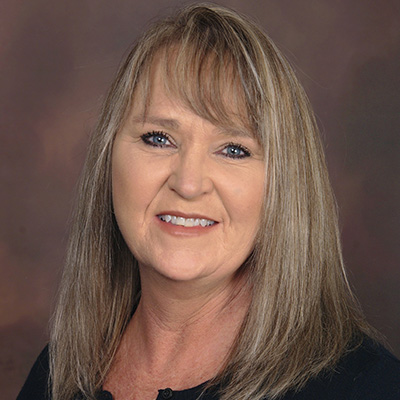
Most business owners don’t know how to read financial statements and only rely on their bookkeepers to do everything. If you want to run a well-oiled business, owner involvement must start from the top. Do not only focus on the bottom line and let others take care of the nitty gritty without proper supervision. This means you have to sit down with your bookkeepers and understand your P&Ls throughout.
Join Ryan Englin in this conversation with Adriane Woodrum, a Financial Coach at Business Development Resources. Listen in as they talk about bank reconciliation and the ideal bookkeeping process. Learn how you can get involved full-time as an owner in the financial side of your business. Don’t leave your bookkeepers hanging and secure a smooth cash flow within your operations.
—
Get Out Of The Weeds & Act Like An Owner With Adriane Woodrum
What’s the biggest myth that you want to shatter for our readers right now about your expertise? This is my first question. You probably have a bunch of them. You have to be involved as the owner. You can’t turn the blind eye to your financials, which I know so many owners that I’m like, “When’s the last time you looked at the P&L?” “My CPA gave me one last January from last year.” I’m like, “No. You are telling me you can’t hire right now because you don’t have enough revenue coming in to hire a new person. When’s the last time you looked at your financials?”
Let’s say you start right off the bat. The biggest myth, I don’t even know how to answer that question.
What’s the biggest roadblock you run into when working with a new client?
The biggest roadblock is the owners not being on the same page. What it boils down to is we need the owner’s bought into what’s happening in the business and understand that there has to be a procedure or a process for everything that we do. It starts at the top thinking that financial reports magically appear without the proper workflow. That starts with the owner being on board and being part of creating that and encouraging everybody is doing the same thing every day.
Owners need to be bought into what's happening in the business. There needs to be a process and procedure for everything. Click To TweetI think that a great myth is that, “I can own the business and not be involved in the day-to-day and not be involved in the financials and the business will take care of itself. My people will take care of everything for me.” That is a great myth that we need to bust. You have to be involved. I tell people all the time and this is me personally.
“If I knew how involved I had to be in the financials to be the owner of a business, I would have gone and done sales for somebody else.” I would have worked for somebody else because I don’t like financials. I can’t stand it but I had a mentor that for twelve months beat it into me. “Where’s your P&L and balance sheet? What is this telling you? What is wrong with this?” I’m like, “Stop. I don’t like this stuff.”
After a year of him making me eat my broccoli, I’m like, “I like this stuff now.” I look at my financial statements twice a month just to make sure because, for me, the beginning and end of the month are different every single month. I look at them twice a month. This stuff needs to make sense and I make decisions based on it. I drank the Kool-Aid, is what I’m telling you but for years, I fought.
Most people do. I think that’s one of the most rewarding things is when we start with a client, the owners can’t read the financials. You hand it to them. They see the revenue and bottom line but they don’t understand all the stuff in the middle. Part of our goal is to teach an owner how to read their reports so that when their bookkeeper prints them and hands them to them, they can look at them and know exactly how much gross profit they had and why it’s high or low.

They can pick it apart and see exactly what’s happening and manage the numbers. Seeing the progress from the beginning and over time, you see the light bulbs going off and it’s wonderful because they never understood it before. That’s one of our goals is to give it to that point so the bookkeepers are putting things in the right place, and the owners are understanding what to look for and when something’s not in the right.
I think that’s great. Having the information you need to make good decisions, but knowing the information you have isn’t any good. It’s garbage in, garbage out. You have to be involved in the process. I love how you started with a checklist. Make sure everything is done. I can’t tell you how many people I have talked to and they might have twenty techs on the roads. They are a decent-sized contractor and they will tell me, “We are not going to hit payroll this month because we had all these payables we didn’t know about or we forgot.”
We have got to take care of this to keep our vendors happy. I’m like, “How does this happen? How do you get the size you are at?” I share that because nobody’s immune from this. You have got to have a process. How does someone figure out that process? How does someone start that and put that process in place?
Start at the beginning. If you are only getting started, the most obvious thing to start with is bank reconciliation. Once you get that down, we are going to add something else and we are going to add the next thing but you have to start with one thing. It can’t be something that you only remember, “I do this every month. I’m going to remember to do it.” You have to have a physical list because you have to be able to reconcile yourself with something.

You can’t rely on your memory. Too many things happen in a day, week, or month to think you are going to remember everything. You have to have something to be accountable to and that means you start at the beginning. You start with one thing, and then you add something else until you get to the point where you have 25 or 30 things to do to make sure everything’s entered to know that your reports are accurate.
Someone told me one time. They said, “Your brain was designed for processing, not for storage.” To sit there and remember all of the things you have to do and I love what you said too because you didn’t say, “You need to reconcile your books when you feel like it.” You said monthly. Every month you need to reconcile those books because how do you make decisions when you don’t have solid financials? I believe that every single thing you do in business can be tied back to a dollar somewhere, whether it’s revenue generated or expense created.
You are going to have your yearly goal of how much revenue, gross profit, and net you want to have, but you can’t manage on a yearly basis. You have to break that down into bitesize pieces, which means you have to have monthly goals. With revenue trends, the revenue is not going to be the same every month throughout the year. It’s going to be different based on seasons because we’re a seasonal industry.
To be able to break that down and know exactly how much you have to have this month or next month, and see the fluctuation. You manage each month based on what you need to make sure that you are reaching your goal for the whole year together but it’s got to be in bite-size pieces. The only way to do that is to make sure that every month, you are recognizing everything that happened in that month so you know exactly where you are and what you need to do the next month.
You can't manage your revenue and gross profit yearly. You have to manage it every month to know exactly where you are. Click To TweetI have been doing this long enough, but it’s amazing to me how the story that your financials tells can do so much for helping you either continue writing that story or start writing a new one going forward.
Exactly, because you might have a month that typically historically does well, but then something crazy happens and it’s an unusually low November. It doesn’t match the trends so then you know, “I have got to figure out something different to do next month to make up for what didn’t happen this month.” You have to be prepared to change courses based on what happens.
I would imagine the only way you can do that as the owner is if you are involved in this process.
Absolutely.
What does that look like? When you say involved in the process? You are not saying that they got to learn QuickBooks and go do bookkeeping? What does involvement look like?
Involvement means that they have to know what’s happening. They need to know how many jobs are going on and how many we have on hold waiting to be scheduled. They need to know that the managers are managing the departments and that the information is getting from the field to the office and from the CSRs or the billing clerks to accounting. They need to know that the customers are being billed. They need to know that the vendors are being paid. You can’t walk in one day, as you said, and say, “Why aren’t we paying the bills?” You have to keep your finger on the pulse.
It’s so interesting what you said. I think it was insightful for me, is that it’s not only the bookkeeping that needs to happen. It’s making sure that processes are working throughout the whole company. The CSRs, techs, and managers are doing their jobs, and everybody is sending the right information to you so that you can make a good decision. It’s not only about the cash and the bank account or what shows on the P&L. There is so much more data that needs to be collected and gathered to tell the story.
Going back to the myth you were talking about. One of the biggest myths is that at the end of the day, all of the accounting getting to the right place is the responsibility of the bookkeeper. I’m going to back that up a little bit because bookkeepers are historians. We record data that’s already happened. By the time that information gets to our desks, we shouldn’t have to go out researching or looking for anything. Everything we need to know should be what comes to us, which means we need to know the customer’s name.

We need to know what department it goes to. We need to know what it was for or who purchased it. All the information needs to be at our fingertips. When you give incomplete data to the bookkeeper and then they have to spend their time finding out where it came from and what it was for, you have inefficiencies in place.
That never happens. That’s such an interesting perspective, for me at least, it’s when it comes to understanding the health of your business based on financials, there’s so much more to it than the historical record that the bookkeeper provides you. A P&L is a historical record. How do we use that information to go forward? Now, they are understanding how I collect all this information. What do they do with that information? How do they make a better decision?
You look at your P&L and I tell people all the time. The P&L is something you need to live in. That needs to be your living document every single day. The vitality of your company is your P&L. You need to look at it constantly and determine, “Is my labor high? Is my equipment high? Are my materials high in comparison to your revenue?”
The vitality of your company is your P&L. Click To TweetBased on the percentages of those things, you will know immediately whether your customers have been billed like they should have been, or maybe something was put in the wrong department from an equipment or material standpoint. Maybe we’ve got too much labor that we are paying the technicians that can’t be applied to jobs that we can’t bill for. You see the whole working dynamics of labor, cost a good sold, and everything right there to know, are we billing as we should be? Is our price high enough? Maybe we need to increase our labor rate. It’s all right there in the P&L. The P&L will give you all of that information.
As long as the information helped you build the P&L.
It’s got to be accurate, which is why it starts from the top. We have to have the procedures in place, and it’s up to the owners and the managers to make sure that the technicians are doing their job and getting that information correctly to the bookkeeper.
You know that I am passionate about helping companies hire technicians and the frontline and the CSRs. One of the things I hear a lot is, “I can’t afford another technician,” or, “I need more revenue and customers before I can hire someone else,” but I know I’m burning my existing technicians out and they are all working 60 hours a week and there’s no money left.
My take on that is there are probably inefficiencies in your systems or your processes or that kind of thing. How do you challenge someone who has that mindset of, “I can’t afford another technician,” or, “I got to keep doing things the way I am? They are not open to change.” How do you work through that with one of your clients or how do you think a typical business owner should work through that?
I would challenge you to say if you are running your technicians to death. If they are going from call to call to call all day and working late every day, I ask you, “How much revenue are you missing on each of the calls they are going to because they are going so fast that they are not looking at everything. How much are you leaving on the table that you could be getting if you had them take more time? You have more technicians. They run fewer calls. They take more time on each call, so they are not missing anything.” You could be leaving so much revenue on the table by running them to death. That could be enough for 1, 2, or 3 more technicians based on how many you are running already. I would challenge them to look at it.
It reminds me of that saying from the Navy SEALs that slow is smooth and smooth is fast. Sometimes slowing down and getting your people to help a second set of eyes, you could have so much more opportunity. I think about the residential service contractors. How many upsell opportunities are they missing? They are going so fast so they can get to the next job and close out the tickets because that’s what you are focused on.
Are you getting through your tickets through the day? Are you getting the jobs done fast enough? You even mentioned, “How many non-billable hours are you paying out versus the opportunities that are lost for billable hours because your technicians are going so fast?” There are so many things that it impacts and that information is in your financials.
Yes, it is, completely.
I heard two things so far. Number one, you got to have a process for your bookkeeping and generating your financials, and you gave us some tips on that but you got to make sure everybody’s doing their job and getting the right information to the right people and doing all of that. What’s something that an owner can do? Someone reading this right now says, “I’m going to go back to my team.” You don’t want to go back to your team and like, “Here are all the new processes. Follow them.” What’s the next step for them so that they can get their team to embrace this idea of collecting the right data and getting the right information so we can start making better decisions?
This is an interesting concept. I was talking to someone about this because I think that the owners need to have a conversation with the source. They need to sit down with the bookkeepers and say, what do you need? How can I help you get what you need from me? A lot of times, bookkeepers are stuck in a hole and expect to get everything put in. They don’t feel comfortable necessarily speaking what they need.

I think sometimes the owners have to sit down with them and say, “What do you need from me? How can I help you make the financials more accurate?” They take that information and maybe they go sit down with the service manager and say, “I need you to review your guys’ invoices every day and make sure that everything’s on there that needs to be. I need you to verify that the invoices are correct before they ever get to the bookkeeper.”
Maybe they go to the install manager and say, “I need you to make sure that the warehouse guy is separating what was pulled off the shelf versus what was ordered for a specific job so the bookkeeper knows what to pull from inventory and what to list in a different way. All of that begins with a conversation. They need to have a conversation.
That’s one of the go-to things for me is to ask them, talk to them, or have a conversation. I love what you said. We do a lot around behavioral analysis and understanding that people behave differently. Some people get comfortable doing a show with video on, and some people are like, “I don’t want to talk to anybody at all ever.” You develop different behaviors. What we find is that good bookkeepers are typically in the latter group. They don’t want to talk to a lot of people. They don’t want to raise their ruckus. They don’t want to raise their hand and say, “Boss, I got an issue.” That’s not natural for them. It’s very uncomfortable.
If you don’t have a good rapport with your bookkeeper, you don’t have a good relationship with them, they are never going to do that. You have to go to them in a very non-confrontational way. I have seen people do this. “The financials are a problem. They are a mess. You are a mess. Fix it.” That’s not the way you do that with someone like that. I love that you have that question of going to them and saying, “What do you need from me? What do you need from the team to make your job easier?” I think that caps out the whole thing. That’s the next action you take is to go to your bookkeeper and say that.
You are exactly right. Bookkeepers are data people. They are not people, people. Some of them may be. Maybe they are the best of both worlds and they love people and data, but that’s not typical. Most people like to get in their spreadsheets and that’s their comfort zone. You have to go to them.
Most bookkeepers are data people, not people-people. As a business owner, you have to talk with them. Click To TweetHaving a conversation with your team about what they need and what they can do to support the people that need it. It’s because after the bookkeeper tells you what they need, you got to go to your team and say, “What can you do to get them the information they need?” You can then have better financials. You can make better decisions about your business and you can achieve your goals. Did I summarize everything you said?
I think you did.
This was awesome. I know there are people that are reading right now that are going to want to get ahold of you. They are like, “This is cool, but I need help.” How do people learn about you?
They can go to BDRCO.com and find out anything they need.
Can they get ahold of you there and everything? Maybe a form or a phone number?
Yes. All of the team members are listed in there? They should be able to get in touch with anybody at BDR.
I enjoyed this conversation. Thank you for being on the show.
Thank you for having me.
Important Links
Love the show? Subscribe, rate, review, and share! https://bluecollarculture.com/podcast/

